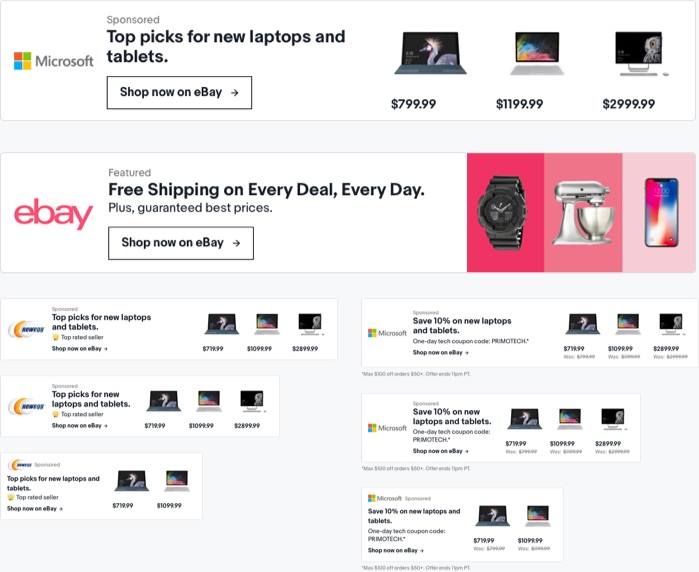At our core, eBay is an advertising platform. Every seller starts by creating a listing – an ad – for their inventory. As our B2C Selling team gives these sellers tools to become businesses, the ads team converts them into advertisers with tools for growth.
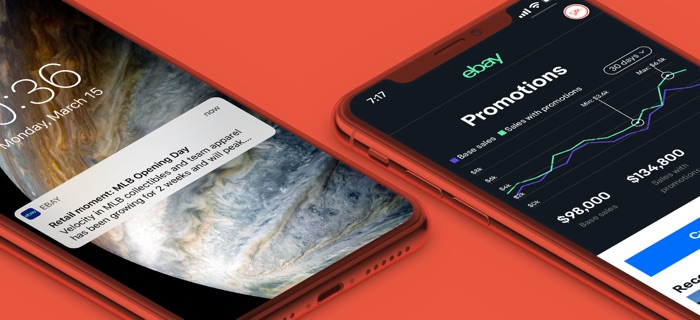
To make ads a user-positive experience we need to move beyond standard third-party banners.
We may never be fully rid of third party ads – ads served by Google and the like, that take users off eBay. What we can do in the short term is explore how those banners impact users’ behavior on eBay and provide recommendations on how to minimize any negative impact.
Every decision must balance revenue with user impact. So when we’re faced with a new ad product – whether they are video ads, overlays, sponsorships, or lead generation products – we must be the voice of our users, both shoppers and advertisers.
The only thing less popular than a banner ad on many sites would be a video ad. Video itself isn’t the problem. YouTube, Netflix, and countless other video delivery platforms are loved by their users. The problem is that, in the context of any shopping experience, a banner ad is distracting, and a video banner even more so – but the revenue potential is high.
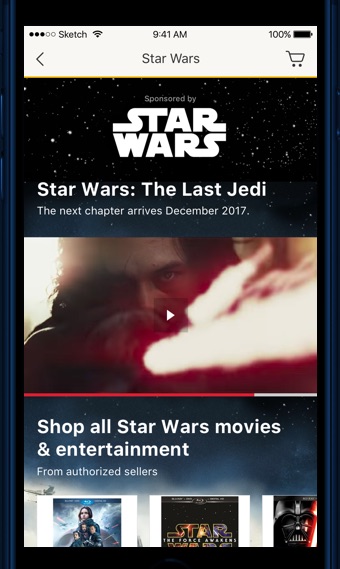
Outcomes
1.
Designed a system of requirements for creates a user-positive experience.
2.
Multiple potential video experiences were shelved, based on my research.
3.
Generated continued investment into video ads & shopping experiences.
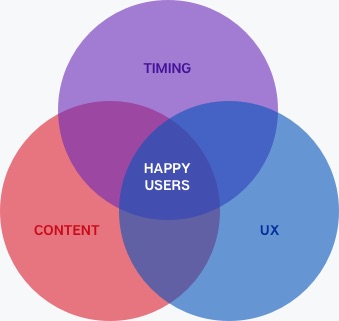
Our Rules
Mapping our Content
We began by defining the types of video content we want on-site – heroic, information, and attractive – and how they would integrate into a shopping-first experience. After all, eBay is a platform to connect buyers and sellers - so at the end of the day, all of our video ads should focus on encouraging and completing that transaction.
I paired this with content examples developed for each type - what type of advertisers may use each spot, how we would measure engagement (clicks, views, or sales) and finally, created a business case for our plan with the help of product owners.

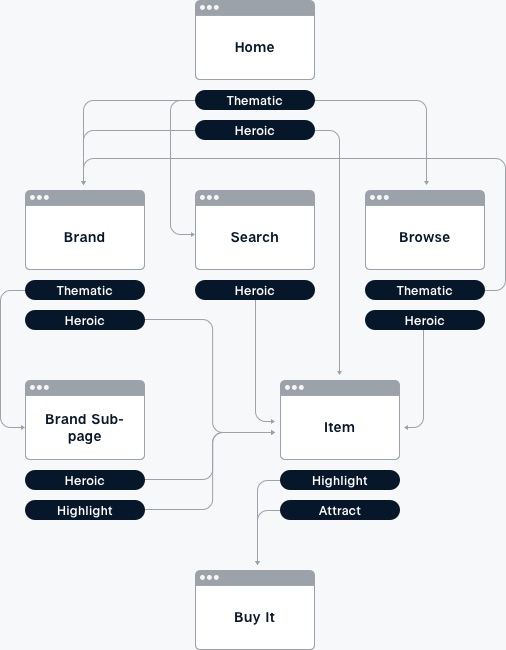
Our Proposal
We proposed to begin focusing on capturing marketing dollars based on movie trailers. This heroic content would be very high quality, and would be displayed in a polite, accessible manner - and would be paired with merchandise from eBay sellers who opt-in to the program. If implemented, this would have been the first shoppable video experience on eBay.
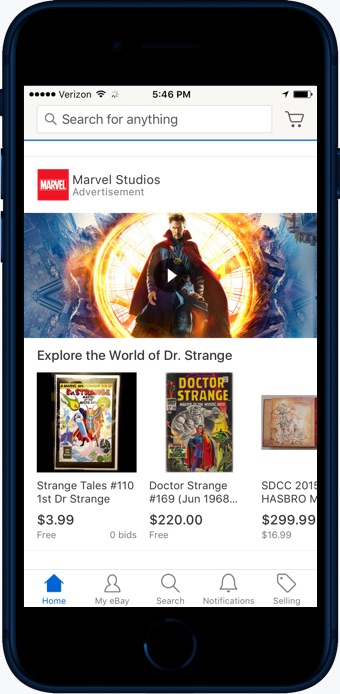
First party display ads are a key method of driving additional revenue for eBay, while providing additional benefits for brands and sellers on eBay. My first involvement was to redesign the existing banners on our website and native apps that would drive buyers to customized event pages on eBay.
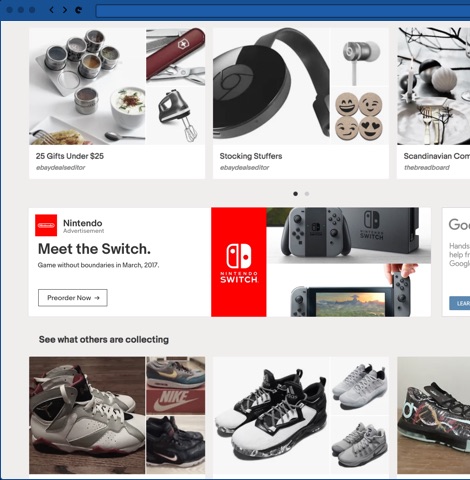
Recreating the Campaign Manager
To take advantage of increased distribution and display flexibility, we moved from a spreadsheet driven system to a custom campaign manager. Our goal was to make the job of eBay’s ad operations teams easier and more reliable – decreasing the overhead needed to create campaigns means that we can onboard more advertisers with the same resources.
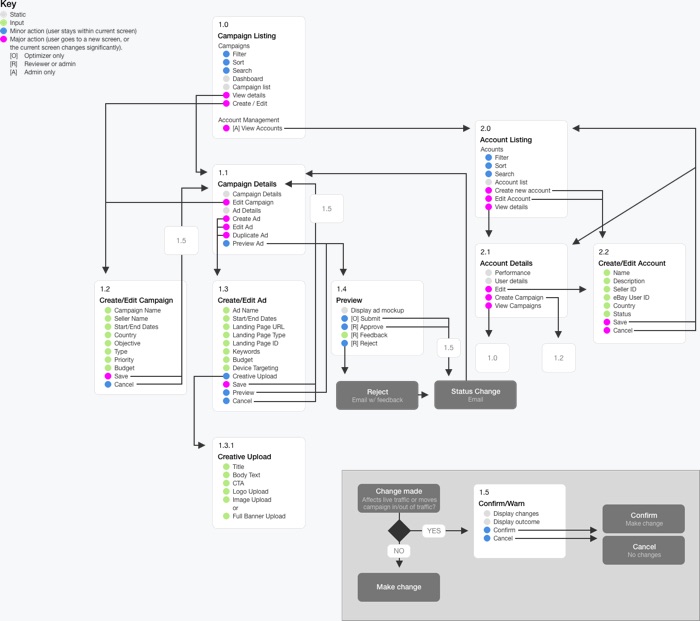
Our initial product focused on three sets of users.
Because all of our users for this tool are internal, it made it easy to test our designs as both small prototypes and full-flow dogfooding as we iterated and simplified the flow to account for only 2 roles: users and admin. The final tool allowed our users to set up mutiple campaigns for each advertiser, as well multiple ads for each campaign – each with its own creative assets, placement, targeting and budget.
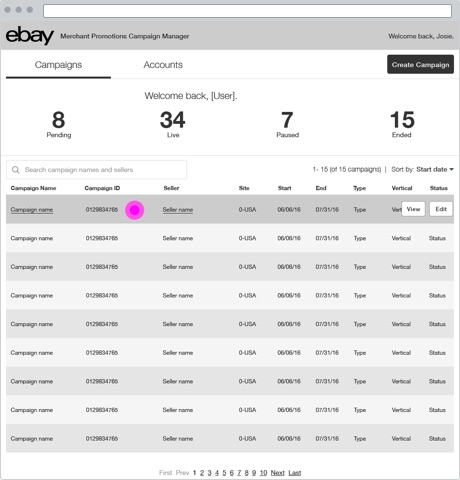
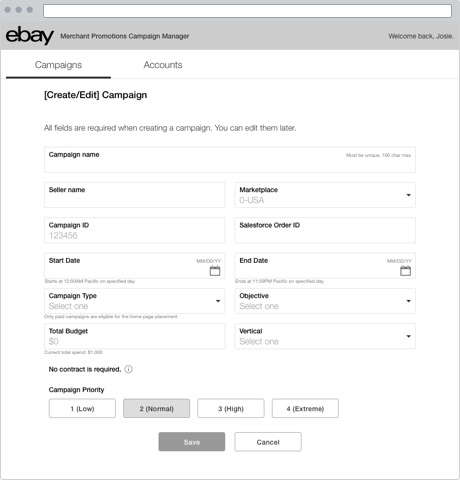
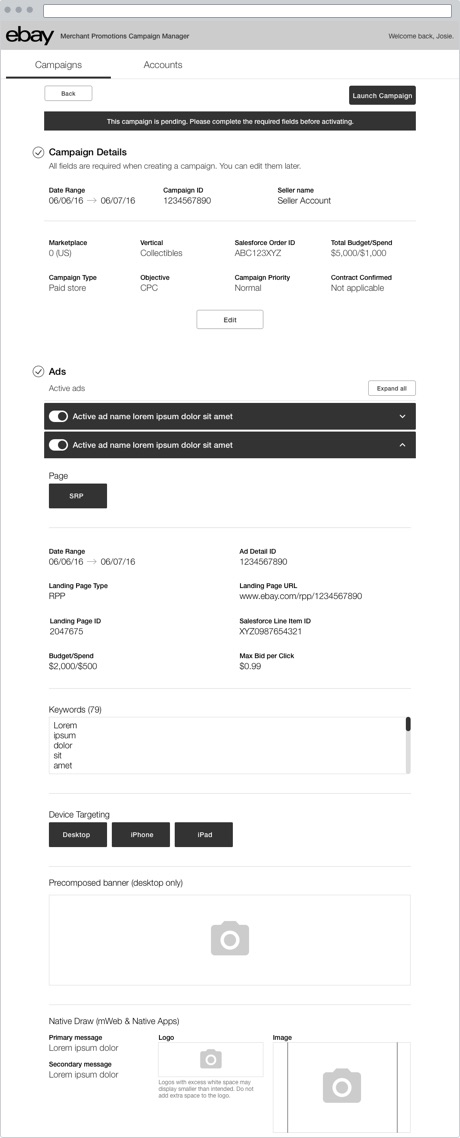
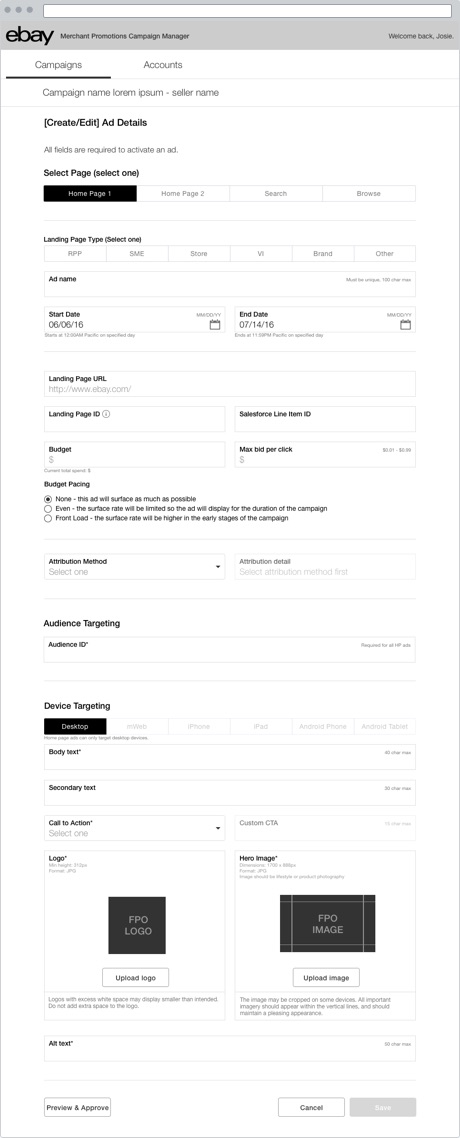
The limitation of the system above was that, as a managed service, we’re never going to be able to scale it to serve. We required contracts of a certain size and the requirements to create an ad itself are somewhat complex. We end up excluding the largest set of eBay sellers, small & medium businesses, who we intended to attract with this product.
Note: This product launched into beta in 2018, and many of the details and future plans are being kept confidential.
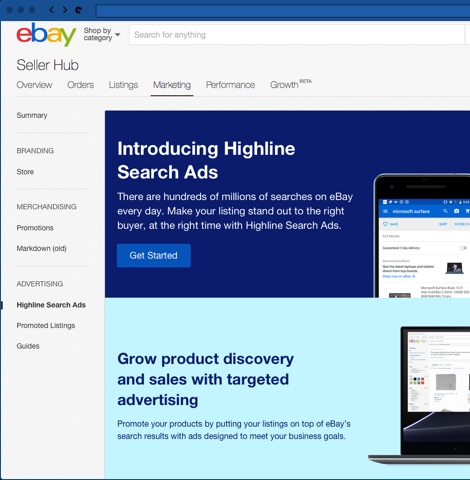
Defining Our Users’ Needs
We started by reviewing existing research about our sellers - the time they spent using our existing selling products, managing their daily business flow. I also wrote 2 surveys that went to our sellers asking about expectations and needs/wants for tools and advertising in general.
Sellers know their inventory. Use that expertise and data to build and target ads for sellers.
Our users are not large businesses – often only a few people. The bulk of their day is spent managing inventory, shipping, and customer service. Advertising is a far lower priority.
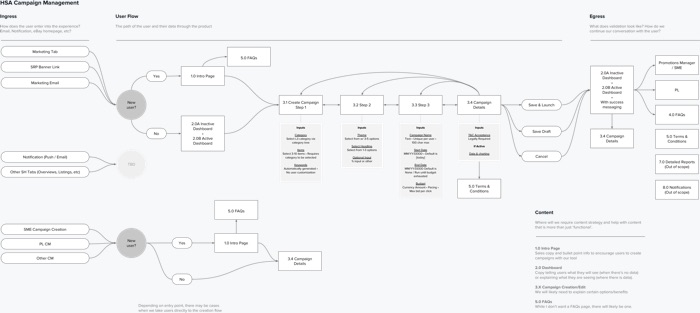
First, we started breaking out the full feature flows so we could evaluate details, such as integration into our existing seller promotional tools (such as discounting), which would provide value for both buyers and sellers, but increase complexity. I created the schedule, and got to work. We also locked down our beta userbase, determined our MVP feature set would focus on automation and the standalone tool, drew up the design delivery schedule, and got to work creating wireframes and prototypes for internal dogfooding and some limited user research on the order of operations, the content creation, and UI pattern application.
Outcomes
200
Beta users
3
Months of live testing
KPIs
Banner CTR, Return on Ad Spend, repeat sales
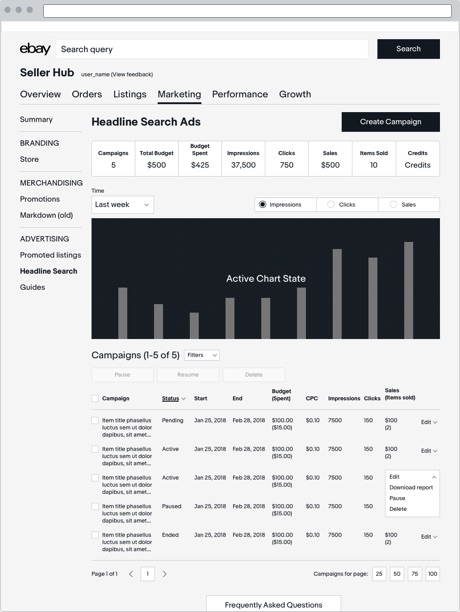
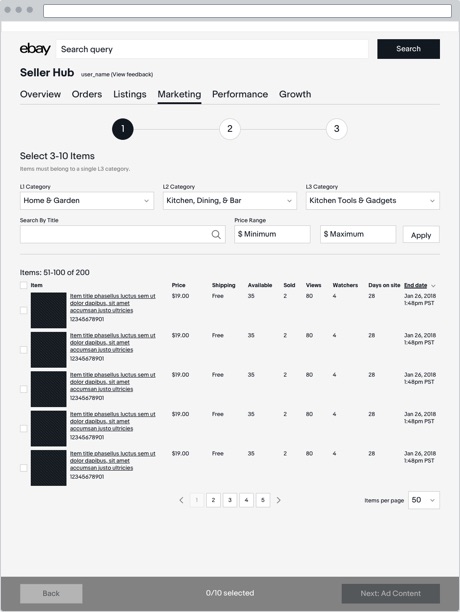
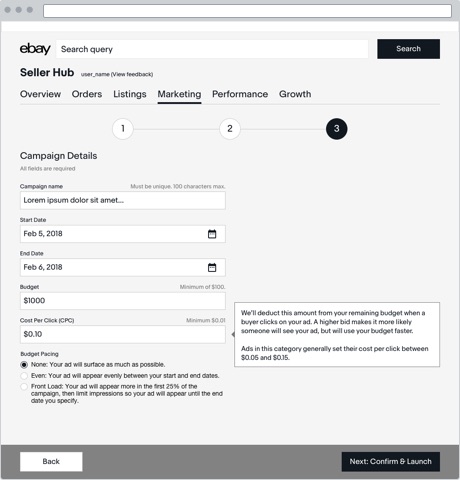

After discovering details such as “the existing pattern for category select is far more complicated for users than sequential dropdowns” and “putting the budget first tends to stall users,” we finalized the visual design and began planning for V2 features.

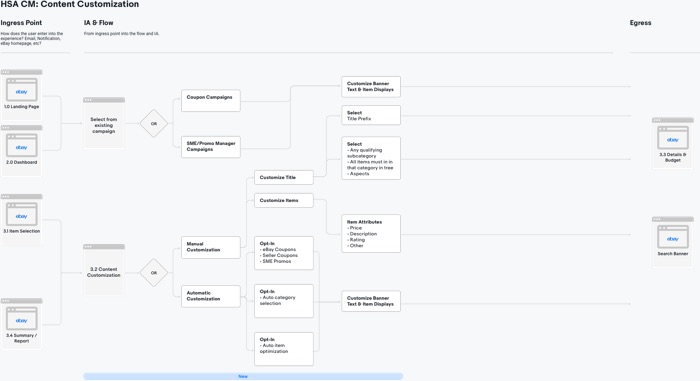
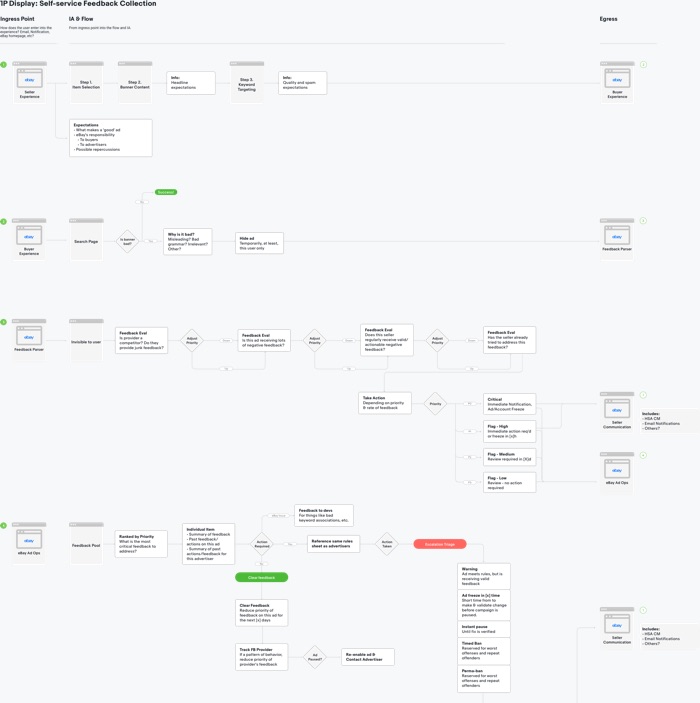
The Buyer Experience
It was decided early on that the ad would drive shoppers either directly to items, or to a campaign landing page. But we had no idea if our existing 1P ads were recognized as from eBay sellers, or if they’d need to change. And while we knew we’d need to minimize the banners’ height, we didn’t know where to compromise on content. We ran several tests via our self-service to begin answering these questions.
We spend a significant amount of this time evaluating content that would increase trust in sellers, as well as what would best communicate the attractiveness of an item, as well as expectations for campaign landing pages.
Based on our research we created banner templates and content maps, which were stacked against our existing patterns and page partners. In the end, we launched with a banner that was a compromise, but allowed to at least run the beta – and had a series of design and content enhancements ready to test if we didn’t see our expected engagement.
